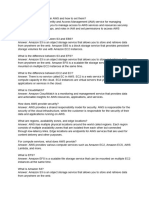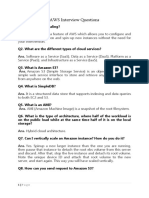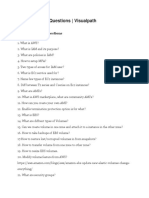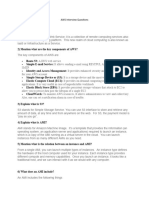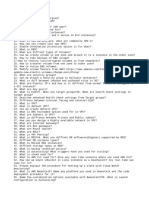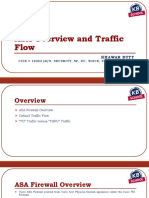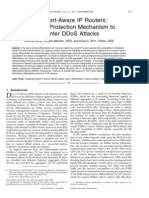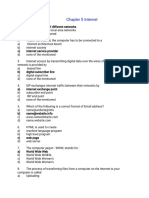0% found this document useful (0 votes)
20 views12 pagesQuestions
The document contains a series of questions and answers related to Amazon Web Services (AWS), focusing on various services such as EC2, EKS, S3, and Auto Scaling, as well as DevOps practices. Key topics include instance limits, user data, security groups, and the differences between AMIs and snapshots. Additionally, it covers AWS networking, IAM roles, Lambda functions, and CI/CD strategies, providing a comprehensive overview for AWS and DevOps professionals.
Uploaded by
pramodghodke264Copyright
© © All Rights Reserved
We take content rights seriously. If you suspect this is your content, claim it here.
Available Formats
Download as TXT, PDF, TXT or read online on Scribd
0% found this document useful (0 votes)
20 views12 pagesQuestions
The document contains a series of questions and answers related to Amazon Web Services (AWS), focusing on various services such as EC2, EKS, S3, and Auto Scaling, as well as DevOps practices. Key topics include instance limits, user data, security groups, and the differences between AMIs and snapshots. Additionally, it covers AWS networking, IAM roles, Lambda functions, and CI/CD strategies, providing a comprehensive overview for AWS and DevOps professionals.
Uploaded by
pramodghodke264Copyright
© © All Rights Reserved
We take content rights seriously. If you suspect this is your content, claim it here.
Available Formats
Download as TXT, PDF, TXT or read online on Scribd
/ 12

















